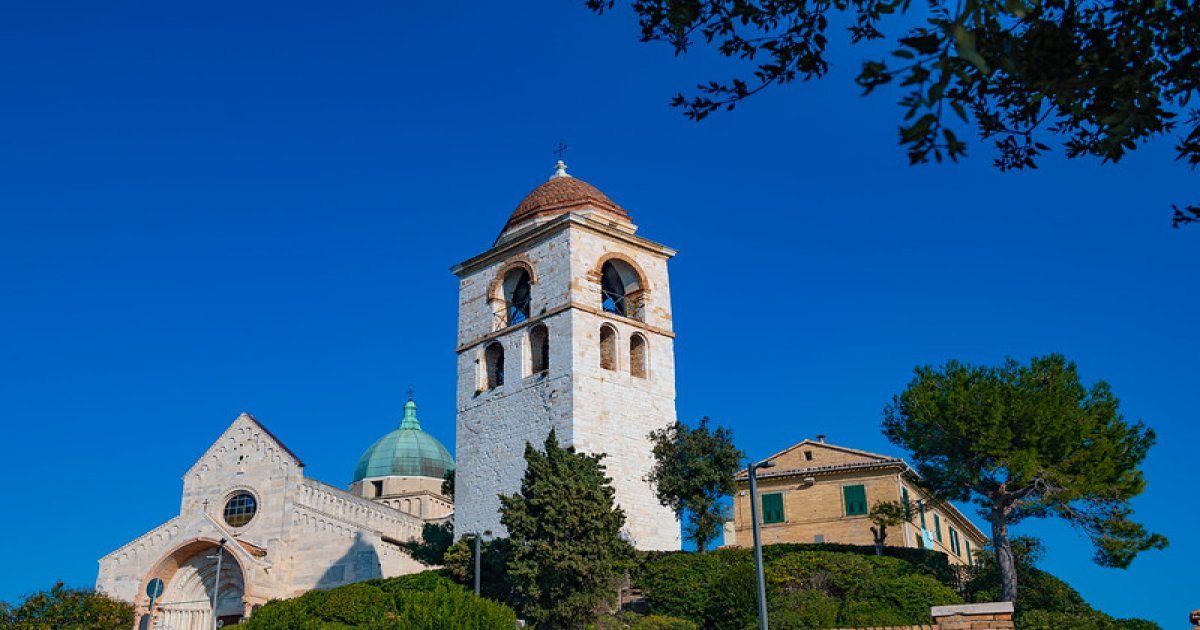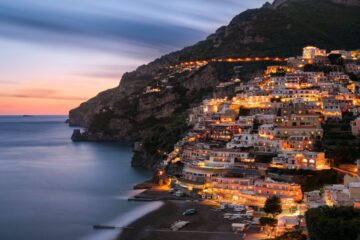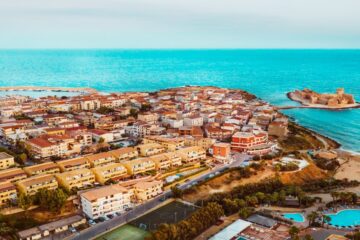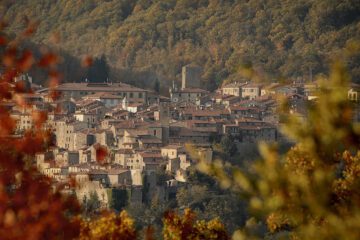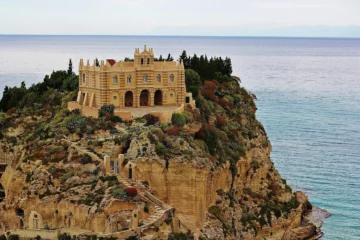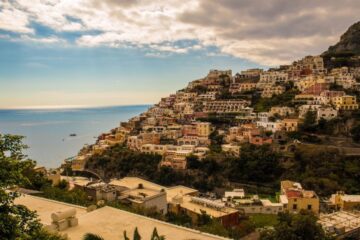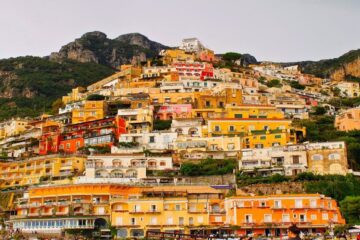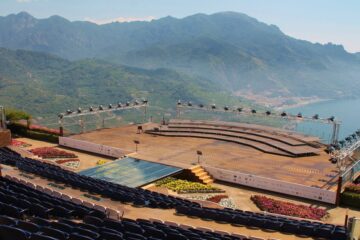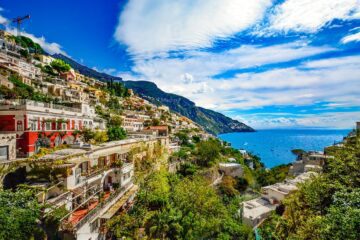Ancona, a picturesque Italian port city on the Adriatic Sea, is noted for its beautiful beaches and active culture. Yet there’s more to this lovely location than meets the eye! Ancona has a distinct history that makes it genuinely remarkable, from its ancient monuments to its modern-day attractions. Let’s look at some of the most fascinating facts about Ancona that you won’t want to miss! You’ll be astounded by what this great location has to offer.
We’ve got you covered whether you’re planning a trip or simply curious about what Ancona has to offer. We’ll look at everything from how long residents have lived in the neighborhood to where they acquire their food – and much more! Please join us as we find some amazing Ancona facts that will have you wanting more. There’s something for everyone here, so follow your inner urge for freedom via these fantastic insights into Italy’s hidden jewel!
1. Ancona Is The Capital Of The Province Of Ancona Italy And Of The Region.
Ancona, Italy is the capital of the same-named province and region. It is a seaside town in the Italian province of Marche, on the Adriatic Sea. Ancona has centuries of history, culture, and breathtaking vistas that draw thousands of visitors each year.
The city has a long history; it was built in 387 BC by Greek immigrants who called it after the patron goddess Ancharia. It became part of Italy following its unification in 1861 after changing hands multiple times throughout the years. Nowadays, Ancona is home to numerous notable structures, including Trajan’s Arch and the Romanesque-style Church of San Ciriaco, both built by Roman Emperor Trajan.
While visiting Ancona, you may visit historical sights such as The Mole Vanvitelliana, which dates back to 1732 or walk along one of their lovely beaches such as Passetto di Borgo or Spiaggia Urbani for great panoramic views of the coastline. Monte Conero is another excellent tourist destination, with outstanding nature paths and stunning cliffside panoramas.
If you want to experience a true sense of local life, go to Piazza del Plebiscito, where traditional eateries serve wonderful food cooked with fresh ingredients found locally! There are many things about Ancona that make this city so unique, from visiting landmarks to relishing local cuisine!
Read also: Uncovering the True Cost of Living in Positano
2. Ancona Is One Of The Main Ports On The Adriatic Sea, Especially For Passenger Traffic, And Is The Main Economic And Demographic Centre Of The Region.
Ancona is a bustling seaside city on Italy’s eastern border, directly on the Adriatic Sea. It has some breathtaking vistas and magnificent beaches that bring people from all across Europe every year. Yet Ancona is much more than its magnificent surroundings; it has an immensely rich history and profound cultural roots that have made it an important hub for commerce and tourism throughout the years. Ancona, being one of the Adriatic Sea’s key ports, is not only a busy center for passenger trade but also an economic basis for most of central Italy. In addition to being a major port, Ancona is home to a plethora of enterprises, colleges, museums, cathedrals, and other attractions, making it an ideal destination for travelers seeking something unusual or surprising. Whether you want to learn about Italian culture directly or just get away from your stressful life back home, Ancona provides lots of opportunities to discover what the area has to offer. There’s no lack of things to do in this fascinating city, from scenic lanes lined with cafés and restaurants selling great local foods to historic landmarks like the Arch of Trajan showcasing Roman history. With so much going on in such close quarters, it’s easy to understand why Ancona remains one of Italy’s most prized jewels today.
3. Ancona Was Populated As A Region By Picentes Since The 6th Century Bc Who Developed A Small Town There.
Ancona has a long and interesting history that reaches back to ancient times. Picentes were among the earliest residents in this area, establishing a small hamlet here as early as the sixth century BC.
Nowadays Ancona has become something much more than a simple port on the Adriatic Sea – it’s an economic and demographic powerhouse for the entire region. Here are just four reasons why:
- It is home to many world-famous attractions such as its ancient Roman amphitheater and medieval cathedral.
- Its strategic location makes it ideal for both commercial maritime activities and tourism alike.
- The city boasts pristine beaches along its coastline, perfect for relaxation or taking part in various watersports.
- It also offers a diverse range of cultural events throughout the year, from traditional music festivals to smaller art exhibitions.
The combination of these factors makes Ancona an exciting destination with plenty to offer visitors looking for new experiences and opportunities to explore Italian culture at its best. Whether you’re looking for adventure or simply wishing to get away from it all, this coastal gem promises unforgettable memories that will last long after your visit ends!
Read also: Explore Ancona: Top Things To Do in This Italian City
4. Ancona Was Attacked Successively By The Goths And Lombards Between The 3rd And 5th Centuries But Recovered Its Strength And Importance.
Ancona was regularly assaulted by Goths and Lombards throughout the third and fifth centuries, but it always recovered and rebuilt its power. This city-state is well-known for being a prominent port on the Adriatic Sea as well as an important commerce center at the time. Ancona’s strategic position enabled it to dominate most of the traffic between Rome and other Italian towns, as well as numerous other countries.
Despite repeated invasions throughout history, Ancona has continuously displayed resistance and refuses to be intimidated by its enemies. In reality, it is still standing today because of its people’s constant resistance against invaders throughout the years. Because of the assaults, its population had grown highly diversified; many other cultures impacted how the residents of Ancona lived their lives.
Inside the city gates, this variety gave birth to several intriguing traditions. For example, whereas most localities in Italy used Latin as their major language during the time, Ancona switched to Greek! Moreover, they devised unique religious traditions that combined paganism with Christianity, which was unheard of in Europe at the time.
Ancona was a significant force in Mediterranean trade even before Marco Polo arrived more than a thousand years later, thanks to its strong fortifications and openness to different cultures. It is still one of Italy’s oldest seaports, attracting merchants from all over the globe – evidence that a little bit of bravery can go a long way toward maintaining your culture through good and terrible times.
5. An Oligarchic Republic, Ancona Was Ruled By Six Elders, Elected By The Three Terzieri Into Which The City Was Divided: S Pietro, Porto, And Capodimonte.
Under the guidance of its six Elders, Ancona enjoyed a time of remarkable prosperity. These elected officials, who represented three different districts – S Pietro, Porto, and Capodimonte – exercised rigorous supervision over their constituents and ensured the city’s law and order. The people of Ancona discovered freedom in self-determination because they had a vote in who led them via democratic elections.
Ancona was noted for its great economic activity in addition to being an oligarchic republic. Being a coastal city with two ports on each side, it grew into an important commerce center, attracting merchants from all across Europe. During this period, the area exported goods such as spices, olive oil, wine, and fish; as a result, many affluent families established their homes here owing to the lucrative commercial prospects offered.
Several cultural events were also held in the city. For example, ‘La Festa di Santa Barbara,’ which took place yearly on December 4th and honored Saint Barbara’s Day with music performances by local artists and dance presentations by professional dancers, was a popular event. This celebration brought individuals from all origins and cultures together and fostered harmony among them. It entertained everyone while simultaneously teaching them the value of appreciating one another’s uniqueness.
Several prominent personalities have lived in this thriving port city throughout history, including Pope Innocent III (1198-1216), novelist Umberto Eco (1932-2016), and Nobel Prize recipient Rita Levi Montalcini (1909–2012). Because of these noteworthy people, Ancona is still known both nationally and globally as a cultural hub where innovation is fostered and supported.
6. Ancona Was Usually Allied With The Republic Of Ragusa And The Byzantine Empire.
Ancona’s alliance with the Republic of Ragusa and the Byzantine Empire was essential to its success. It allowed Ancona to benefit from a strong trading network, as well as access to powerful military protection. This strategic relationship provided the city with numerous advantages:
- A stable economy due to increased trade opportunities
- Access to goods from both land and sea routes
- Increased profit for merchants by exporting products beyond their own borders
- Enhanced security through diplomatic relationships between allies
- Guaranteed support in times of war or territorial disputes
- Reduced risk of invasion or attacks due to mutual agreements on defense tactics
The association also allowed Ancona to become an important cultural center where intellectuals could meet and exchange ideas. Scholars were able to obtain information through these interactions, which they would later employ to help the city’s growth. Moreover, this collaboration aided in the establishment of religious freedom in Ancona, enabling various religions and beliefs to live peacefully without intervention from outside forces.
This crucial relationship had a tremendous influence on the history and destiny of Ancona. Several developments in art, science, culture, religion, and other fields would not have been conceivable without them. Even today, residents receive the benefits of this relationship on a daily basis; they are free to live their lives as they see fit, without fear of persecution or punishment. Nevertheless, it is commonly stated that Ancona owes much of its prosperity over the centuries—and even today—to its astute choice to create alliances with two extremely strong empires, the Roman Empire and the Ottoman Empire.
Read also: The best Tuscany Hot Air Balloon you Can Try
7. In 1532 Ancona Definitively Lost Its Freedom And Became Part Of The Papal States, Under Pope Clement Vii.
Ancona’s independence was lost in 1532 when it was incorporated into the Papal States under Pope Clement VII. Its loss signified a significant change in Ancona’s political and social life; it meant that all of its residents were subject to Roman power. The city had transitioned from an autonomous republic with its own laws and traditions to one ruled by foreign forces.
The inhabitants of Ancona were severely affected by this upheaval, with many fearing for their livelihoods and liberties as their autonomy was gradually eroded. They opposed these changes as far as they could, demonstrating in protest or just refusing to accept them, but their efforts were eventually futile.
Throughout time, the entrance of Roman law into the city resulted in considerable cultural changes. Religious rituals, for example, started to resemble those prevalent across Italy rather than simply in Ancona – syncretic cults like Santa Maria della Misericordia arose alongside traditional local ones like San Ciriaco d’Ancona. These new religions combined aspects of Roman Catholicism with indigenous spiritual beliefs, resulting in something distinct to the area while also tying it more closely to the rest of Italy.
Anconans progressively adapted to life under papal control over the course of decades. Although being denied total freedom early on, most people loved their newfound status quo. Through trade and commerce, the city became affluent throughout time, and it now stands strong as one of the gems in Marche’s crown, a reminder that even when history does not go our way, we can always find ways to go ahead and survive.
8. Together With Rome And Avignon In Southern France, Ancona Was One Of Three Cities In The Papal States In Which The Jews Were Allowed To Stay After 1569, Living In The Ghetto Built After 1555.
The city of Ancona has a long and fascinating history, one that is intertwined with the complex religious and political landscape of Europe. Despite its turbulent past, Ancona was uniquely positioned to grant freedom to those who sought it. Here are some interesting facts about this remarkable place:
- Religious Freedom
- After 1569, Jews were allowed to stay in three cities within the Papal States—Rome, Avignon, and Ancona—with the construction of a ghetto following shortly afterward in 1555. This unusual level of religious tolerance made Ancona an attractive destination for persecuted minorities seeking refuge from oppressive regimes elsewhere in Europe.
- For centuries, numerous other religions have thrived side by side in Ancona’s diverse cultural atmosphere. Catholics, Jews, Muslims and Protestants all peacefully coexist in what is still considered today as one of Italy’s most religiously tolerant cities.
- Political Unrest
- In 1831 the people of Ancona rose up against their Austrian rulers after years of oppression; they declared independence on May 10th – though sadly their bid for autonomy ultimately failed when their forces were crushed by superior numbers just two months later. Nevertheless, it sparked a sense of revolutionary spirit which ultimately led to Italian unification many decades later.
- More recently during World War II, elements of Civilian resistance fought fiercely against Nazi occupation forces until liberation finally came in 1945 at the end of the war. As a result ‘Ancona’ became synonymous with courage and defiance throughout Italy and beyond.
Today Ancona remains an important port town located between Rome and Venice along Italy’s Adriatic coast – where countless visitors come each year to take part in its unique culture and explore its exciting history firsthand!
Read also: Amalfi Coast Beaches: 10 Spots to Soak Up the Sun
9. Ancona Italy Was One Of The Most Important Italian Ports On The Adriatic Sea During The Great War.
Ancona was Italy’s sole accessible port during the Great War, making it a key lifeline for supplies and military personnel. Because of its strategic location on the Adriatic Sea, Italian ships could cruise quickly between ports while avoiding perilous passages. Ancona’s economy thrived during this period, as did its population of soldiers and sailors who used the secure port.
The government also took advantage of this time period by spending substantially in infrastructure enhancement projects including as road construction, fortress restoration, and port expansion. During the war, this helped Ancona become an even more significant commerce hub. Due to its closeness to other fighting nations such as Yugoslavia and Hungary, the city also witnessed a rise in the number of refugees during this time.
Life in Ancona at this period was full of both pleasures and tragedies; people experienced periods of hope among dread and despair, which were quickly replaced by optimism when triumph seemed to be reachable once again. Against all obstacles, many courageous folks found strength in their religion and bravery with one another to keep fighting until peace was restored after 1918.
Monuments have been placed throughout Ancona to pay respect to everyone who lived through these dreadful years, from those killed at sea or on distant battlefields to those who fought day after day while knowing they could never see freedom again. These plaques serve as a reminder of how much we owe our forefathers for their patience and devotion in ensuring that future generations may live freely under democratic governance.
10. From 1300 And On, The Jewish Community Of Ancona Grew Steadily, Most Due To The City Importance And It Being A Center Of Trade With The Levant.
Ancona, one of Italy’s oldest towns, has a rich cultural heritage dating back to prehistoric times. This Adriatic Sea coast city became a significant commercial hub between Europe and the Levant beginning around 1300, resulting in a steady expansion in its Jewish population. This resulted in an intriguing combination of civilizations, with influences from both the Eastern and Western realms. These are some highlights of how Ancona’s diversity influenced its culture:
- It was home to many different languages such as Hebrew, Latin, Greek, and Italian.
- The city had its own autonomous government for centuries due to its strategic location at the crossroads of major trading routes.
- Its port facilities allowed goods from all over the Mediterranean region to enter Italy without tariffs or customs duties.
- Many famous people like Christopher Columbus have visited Ancona throughout its long history.
Ancona’s Jews were recognized for their learning, which helped make the city one of the most literate in medieval Italy. They also made significant contributions to the local economy by founding various stores and enterprises across town. Moreover, they acted as business middlemen between East and West, which serves to maintain this bustling metropolis linked with the rest of the globe even now. All of these factors contribute to our understanding of what makes Ancona so historically important; a site where cultures meet yet stay distinctly interwoven forevermore!
11. Jews Of Ancona Received Full Emancipation In 1848 With The Election Of Pope Pius Ix.
The people of Ancona had long desired independence, and in 1848, their wish was granted. Jews were granted complete liberty with the election of Pope Pius IX. This was a watershed event for all people who had previously been subjugated by the Papacy’s oppressive regulations. It meant that Jewish citizens might finally use their Italian citizenship rights without fear of persecution or prejudice.
With these increased liberties came a feeling of excitement and optimism for the whole community. Individuals started to start enterprises and go to college, resulting in economic progress and affluence for many families. Moreover, formerly repressed religious views were enthusiastically embraced—people could practice their religion freely without fear of retaliation from the government.
Notwithstanding the beneficial developments brought about by liberation, the Jews of Ancona nonetheless experienced significant difficulties. Anti-Semitism, for example, remained prominent in certain locations, with people and groups continuing to spread vile language against them. Yet, attitudes steadily shifted over time as more educated residents challenged these beliefs peacefully via protests and public discussions.
Ancona is now a bustling center of Jewish culture, with multiple synagogues dotting its streets. The city also hosts a number of yearly events aimed at recognizing diversity in Italian culture and developing tolerance amongst various religions. These projects are only possible because courageous men and women worked diligently for equality against enormous odds years ago – a monument to the strength of resilience even in the face of tragedy.
12. Climate Of Ancona Italy Is Humid Subtropical And The City Lies On The Border Between the Mediterranean And More Continental Regions.
Ancona, Italy, is a lovely city with a unique climate. It has an unusually distinctive blend of climatic elements due to its location on the Adriatic Sea and is flanked by mountain ranges. The humid subtropical climate provides lots of sunlight and mild temperatures all year, as well as some reprieve from more harsh weather in both the Mediterranean and continental areas.
Summer in Ancona is warm but not scorching, making it excellent for outdoor activities like swimming and hiking. While thunderstorms are possible at this time of year, they normally don’t persist long since the sea wind helps to disperse them rapidly. Throughout the fall months, temperatures remain acceptable for many individuals, with some days even being warm until late October! Winters are often rainy and cool, although seldom cold enough for significant snowfall.
Springtime may be the greatest time to get some sun without dealing with extreme heat or humidity. You may take advantage of warmer days between March and May when flowers awaken from their winter slumber. Additionally, if you arrange your vacation carefully, you may be able to attend one of Ancona’s numerous festivals held during these lovely months, which commemorate local vineyards or seaside specialties like Fritto Misto All’anconetana (fried mixed fish).
Ancona’s distinctive environment has something for everyone, whether you’re traveling for business or pleasure. Ancona provides experiences, unlike any other Italian city, from the bright beaches, and days spent exploring neighboring sites to calm nights in quaint cafés near antique churches – whatever the season. Come see why this location has drawn travelers from all around the globe for millennia!
Read also: Sorrento: A Travel Guide for a Memorable Vacation
13. The Average Age Of Ancona Italy Residents Is 48, Compared To The Italian Average Of 42.
Whilst Ancona is a lovely city with many benefits, it also has certain features that set it apart from the rest of Italy. Probably most significantly, its citizens have a far greater average age than Italians in general.
With an average age of 48 for Ancona residents vs 42 for all Italians, this coastal Italian city stands out above others around the nation. This might be attributed to a number of circumstances, including:
- Economic stability: With well-paying jobs and a strong economy, more mature individuals are likely drawn to Ancona as they enter into retirement or semi-retirement age.
- Quality of life: From cultural activities to local restaurants and recreational opportunities, there’s something for everyone in Ancona. The mild climate only adds to its appeal for retirees looking to enjoy their golden years in comfort and style.
- Proximity to other areas: Being located on the border between the Mediterranean and continental regions makes Ancona a great destination spot for those who have interests in both geographical settings.
Younger professionals love Ancona’s distinctive traits just as much as older generations do! People like its affordability mixed with close proximity to facilities such as shopping malls and beaches. And, although you won’t find the rush and bustle of a huge metropolis here, it doesn’t take away from what makes this location great.
Whether your age or lifestyle preferences, this lovely Italian town tucked along the Adriatic Sea coast has something for everyone. Whether you’re looking for leisure or adventure (or both! ), go no farther than Ancona—you won’t be disappointed!
14. Ancona Italy Cathedral, Dedicated To Judas Cyriacus, Was Consecrated At The Beginning Of The 11th Century And Completed In 1189.
The magnificent Ancona Cathedral stands tall and strong in the heart of Italy, a tribute to its illustrious roots. It was dedicated to Judas Cyriacus at the beginning of the 11th century and finished nearly two centuries later, in 1189. Its rich history is as magnificent as its building, and many residents are proud of this recognizable monument.
When you approach the magnificent cathedral, your gaze is pulled to its magnificent marble façade, which is accented by beautiful carvings along its walls and columns. Within, you’ll discover a stunning collection of artworks inspired by holy characters including Jesus Christ and Mary Magdalene. The inside also has bright paintings representing Biblical events that have survived for centuries because of the superb preservation procedures utilized during construction.
Ancona Cathedral is a must-see destination for anybody visiting the city, with almost 800 years of history behind it. Visitors may easily spend a day touring these monuments while immersing themselves in local culture and traditions since they are located within walking distance of other prominent historic sites such as Piazza del Popolo and Castle di San Ciriaco.
One thing is certain: viewing Ancona Cathedral will be an incredible experience that you will remember long after you have left this lovely Italian town! No visit to Ancona would be complete without paying respect to this wonderful piece of history, whether you’re trying to appreciate its architecture up close or just capture some breathtaking shots from afar.
15. Ancona Italy Is Served By Ancona Italy Airport, In Falconara Marittima And Named After Raffaello Sanzio.
Ancona, Italy is much more than its historic church. The vibrant port city also has ferry links to Croatia, Slovenia, and other Mediterranean locations, as well as access to the Adriatic Sea. Ancona Airport near Falconara Marittima serves it, and the airport is named after one of the most prominent Renaissance painters, Raphael Sanzio.
The city has a long history of serving as a vital economic hub between Italy and Eastern Europe. Several relics of this history may be seen around town, including the 18th-century Palazzo del Governatore (Governor’s Palace), which is currently part of the University of Ancona, which was established in 1532.
There’s also much to see on foot, such as the Baroque façade of Saint Francis Church or a trip along Corso Stamira d’Ancona, formerly known as Via Flaminia Romana, which is dotted with exquisite structures going back centuries. For a break from tourism, visit Parco del Conero, a beautiful natural reserve situated south of the city that goes all the way down to the sea.
Ancona has something for everyone, whether you’re looking for culture or leisure. It delivers a wonderful experience for travelers searching for new experiences, with its colossal architecture, cultural attractions, and natural beauty all packed into one handy coastal location.
Read also: The Amalfi Coast: A Comprehensive Travel Guide
16. Ancona Italy Is Served By An Urban And Suburban Bus Network Operated By Conerobus.
Ancona is a significant port city on Italy’s Adriatic coast with excellent public transit. Conerobus offers both urban and suburban bus services across the region, providing inhabitants with easy ways to go about town or out into the surrounding countryside. Tourists may easily see everything that Ancona has to offer thanks to its comprehensive bus network, which eliminates the need to hire a vehicle or depend on taxis for transportation.
Conerobus lines service numerous districts inside Ancona as well as surrounding towns such as Falconara Marittima, Senigallia, and Sirolo. The buses are dependable and efficient; they operate regularly and with little delay, so you won’t get trapped anywhere unexpectedly. Discounted rates are also offered for students, pensioners, and other organizations.
If you want to explore more of Ancona than simply the famous sights, then boarding one of the buses run by Conerobus might be precisely what you need. Several of these routes have breathtaking scenery; rolling hills, luscious vineyards, and dazzling coastline vistas will make your travel even more delightful! There are also other stops where you may get off the bus and explore before boarding another bus back home.
Conerobus’ bus network allows you to easily explore seaside communities, take a day excursion interior, or just go from point A to point B swiftly and affordably. Therefore, why not make use of this fantastic service during your visit to Ancona? Join now for a vacation full of beautiful views and cultural activities – wherever you want to go!

